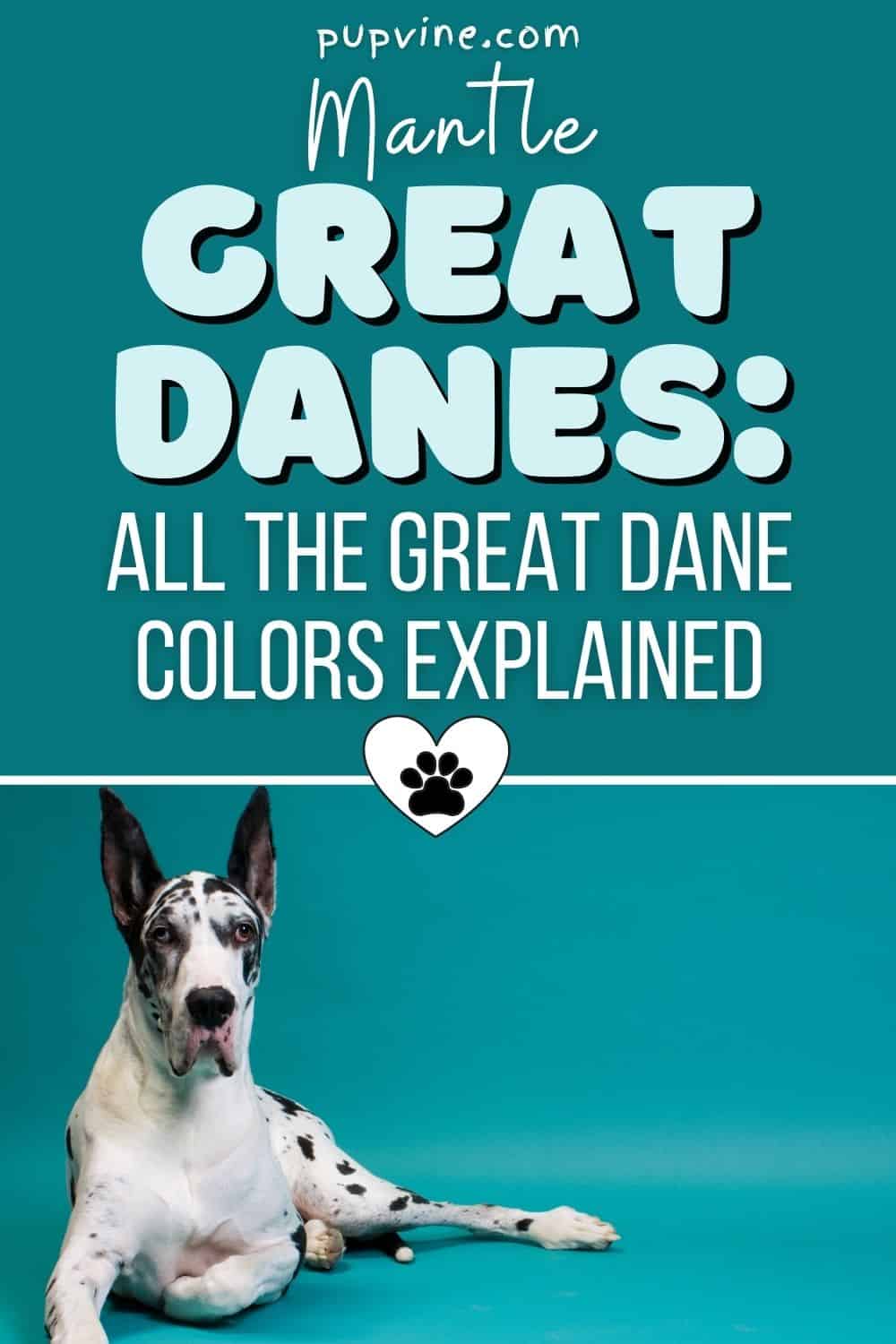If there’s one thing that everybody knows about Great Danes, it’s that they are enormous. As one of the biggest dog breeds in the world, they can seem intimidating. Males can reach 81cm (31.88in), and females, 76cm (29.92in), with some stretching over 2 meters (7ft) when standing on their hind legs! Both sexes can weigh between 45kg and 59kg (99lbs and 130lbs).
Unless you’ve owned one of these gentle giants, you won’t know much else about them, such as the range of coat colors you can get.
We’re here to change all that with an in-depth guide to these beautiful dogs, not just about coat colors, but which includes everything you need to know, and it answers some of the commonly asked questions.
What Is A Mantle Dog?
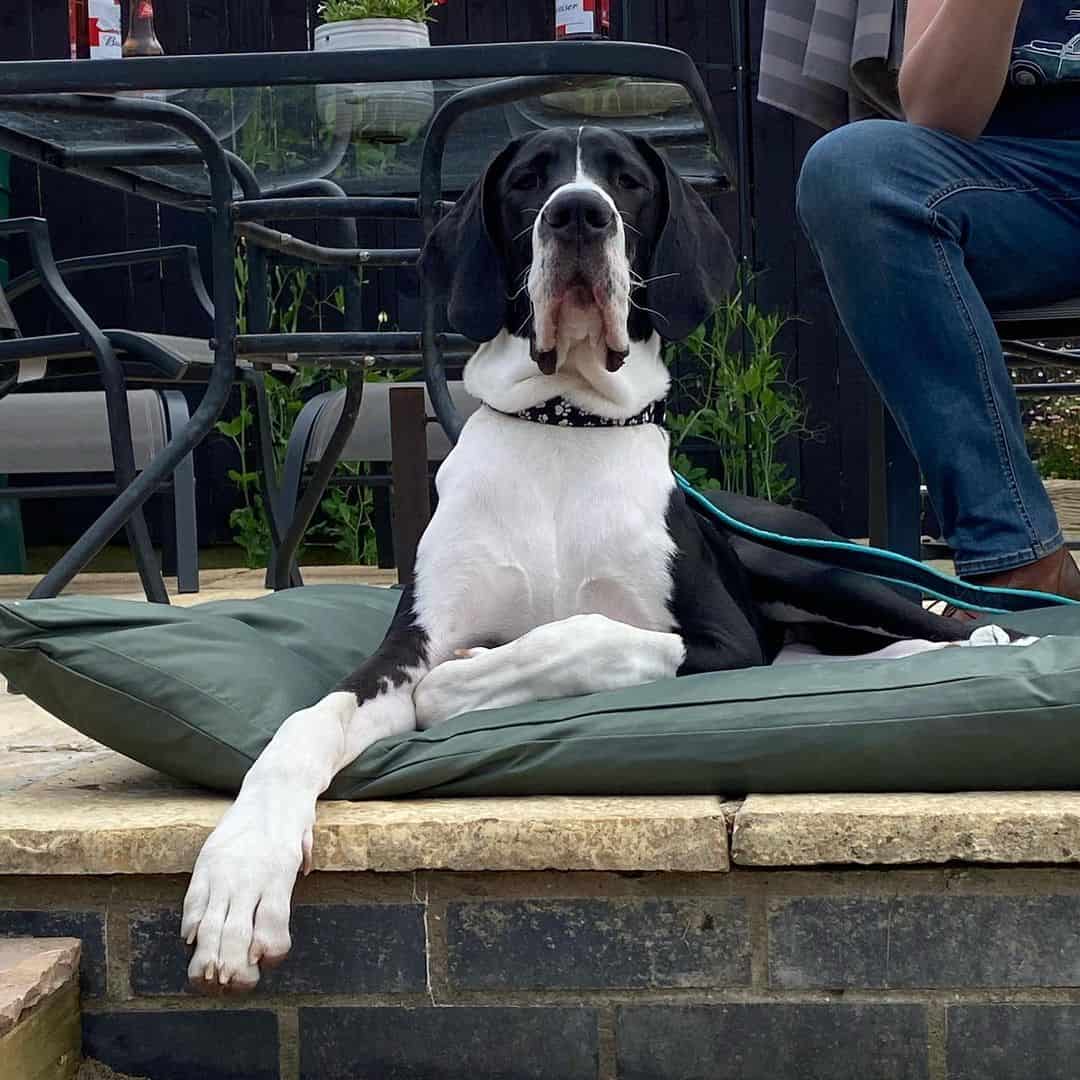
Photo from @rodney.the.great
While your Google search might return results that include small ceramic Spaniels for sale on eBay that you can set on your mantelpiece, this isn’t what we’re talking about!
Think of a mantle as a covering or a cloak. A ‘mantle pattern’ gives the appearance of having a cover over it. It will have a solid, light base color that appears to have a darker blanket draped over the top. The base color will show through on specific parts, such as the head, collar, feet, chest, and tail.
So, we can now ask…
What Is A Mantle Great Dane?
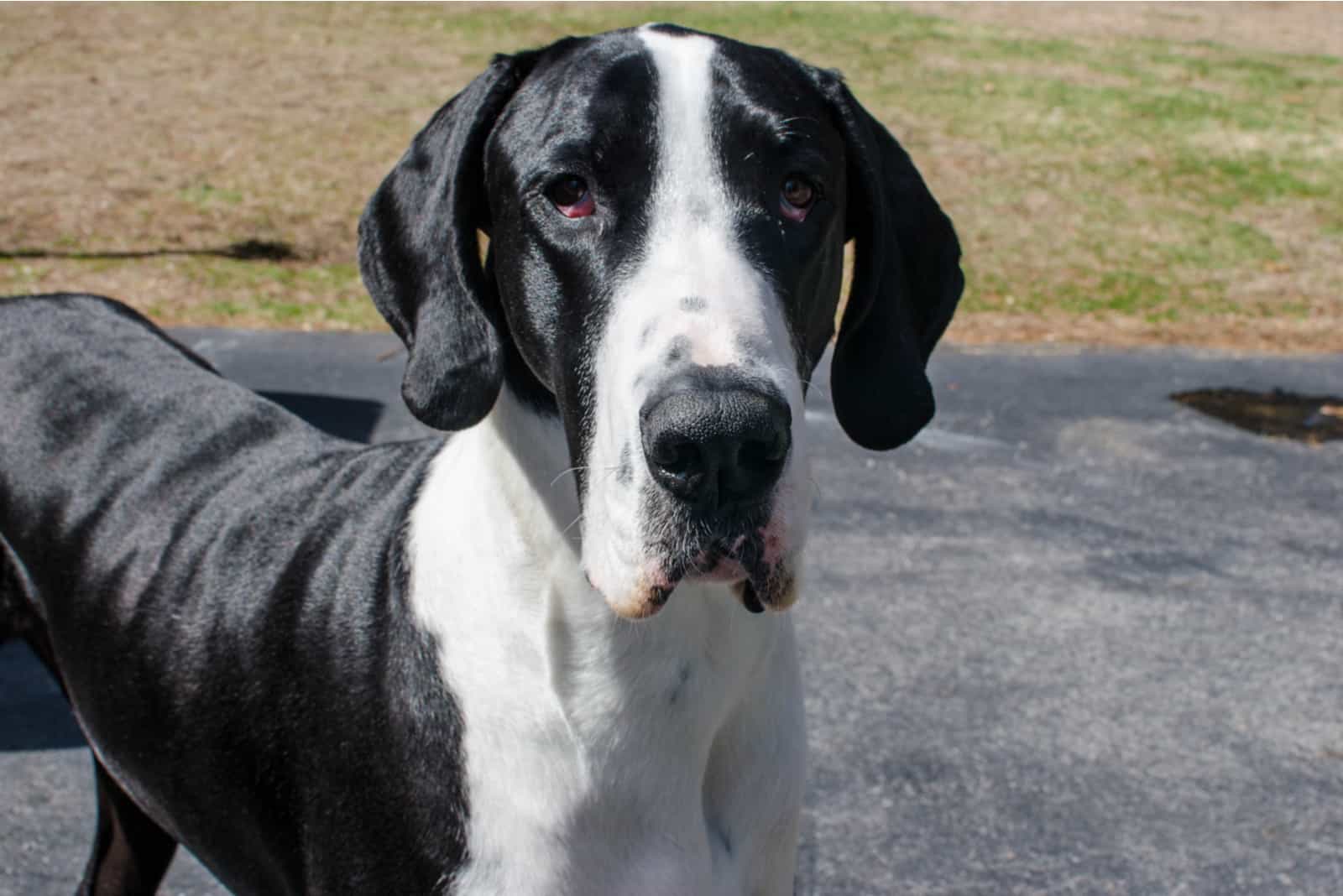
The Mantle Great Dane is usually white with a black blanket over the body, although it officially has a black coat with white markings! It has a black skull with a white muzzle and a white blaze (the strip between its eyes). Its legs look as if they have white socks on, which can be any length. It has a white collar, a white chest, and a black tail with a white tail tip.
Because these markings resemble the Boston Terrier, this breed is sometimes referred to as the Boston Great Dane in some countries.
Most Mantle Great Danes are black and white, although you occasionally get fawn mantles, blue mantles, and merle mantles, which are not considered AKC standard.
While you might not be too fussy about the color of your dog’s coat, organizations such as the American Kennel Club (AKC) set pretty strict standards as to what colors particular breeds should be. These breed standards will apply if you intend to raise a show dog. If your dog has any colorings or markings outside these specifications, it will be disqualified!
All of these approved colors have names and codes, and the AKC stipulates that there are seven official colors for the Great Dane: brindle, fawn, merle, mantle, blue, black, and harlequin.
Each one has its own appeal, and all of them are stunning, but certain colors always tend to be more popular.
Incidentally, the harlequin Great Dane is bred with the mantle to produce Mantle Great Dane pups! Mantle breeding often involves using different colored dogs to reduce the chances of genetic disorders being passed on.
What Is A Harlequin Great Dane?

Since we mentioned harlequins, let’s take a closer look at them.
The harlequin has a pure white base coat with irregular black patches across the entire body. Merle* patches are common (and accepted by the AKC) and they should have a white neck.
*Merle refers to a gene that produces a mottled pattern in the coat as well as affecting eye color and skin pigment.
You might wonder how a dog of this color can produce something like a Mantle Great Dane. That all comes down to the complexities of genetics! In harlequin breeding, two of the same type won’t produce a mantle, and it is never advisable to do this anyway because it increases the chance of genetic disorders in the pups.
See Also: Top 6 Harlequin Great Dane Breeders That Don’t Joke
Can You Breed A Merle Great Dane?
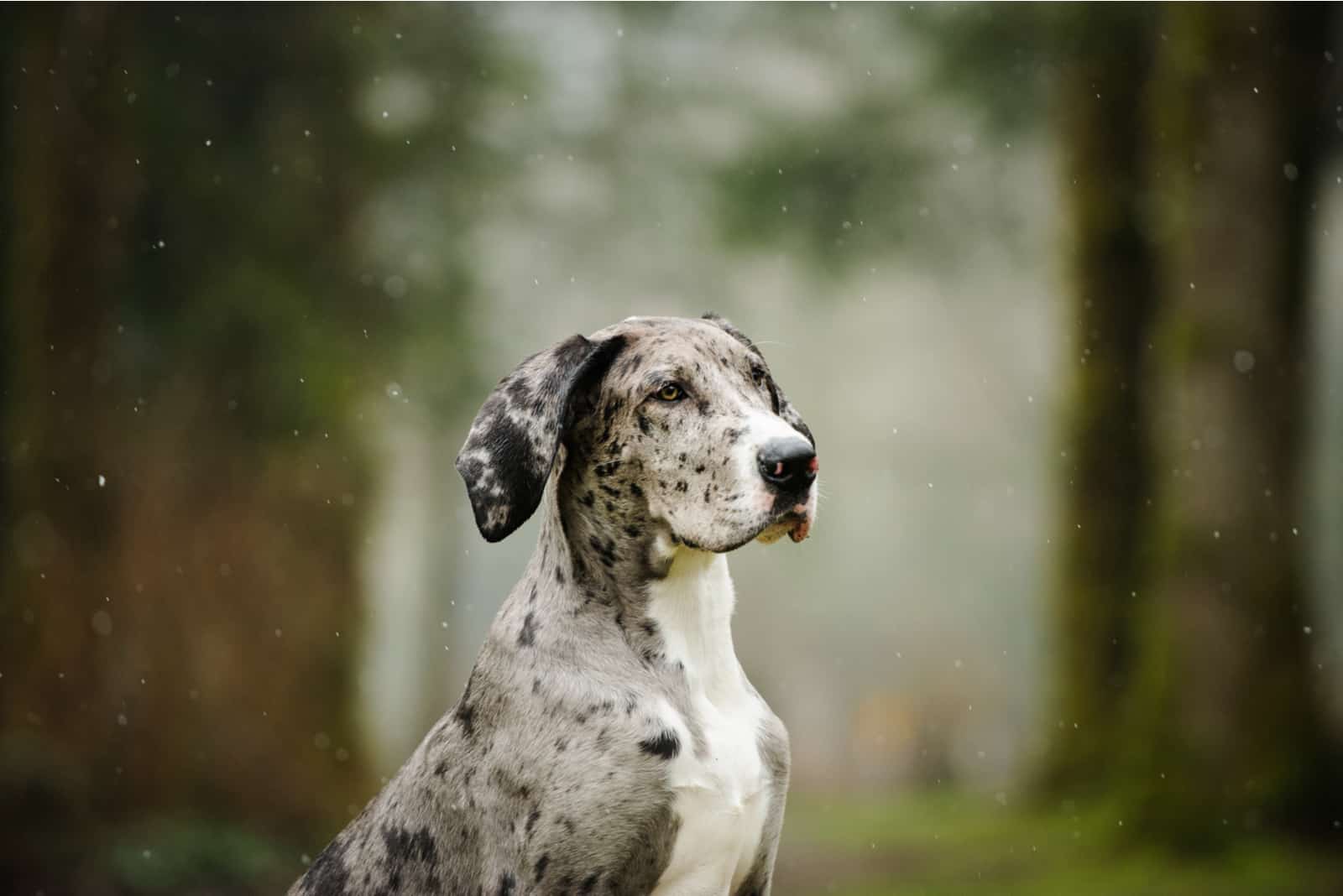
You can do so, but the real question is whether you should.
Although the actual color of the coat doesn’t predispose a dog to having certain genetic disorders, the merle gene that determines the color does carry a high risk of causing some serious health problems.
This is why all reputable breeders will use parent dogs of different colors rather than breeding two of the same kind.
It is widely considered to be unethical to breed merles together, as well as with other colors, as the chances of the pups being stillborn or having physical defects are extremely high.
What Is The Rarest Great Dane Color?
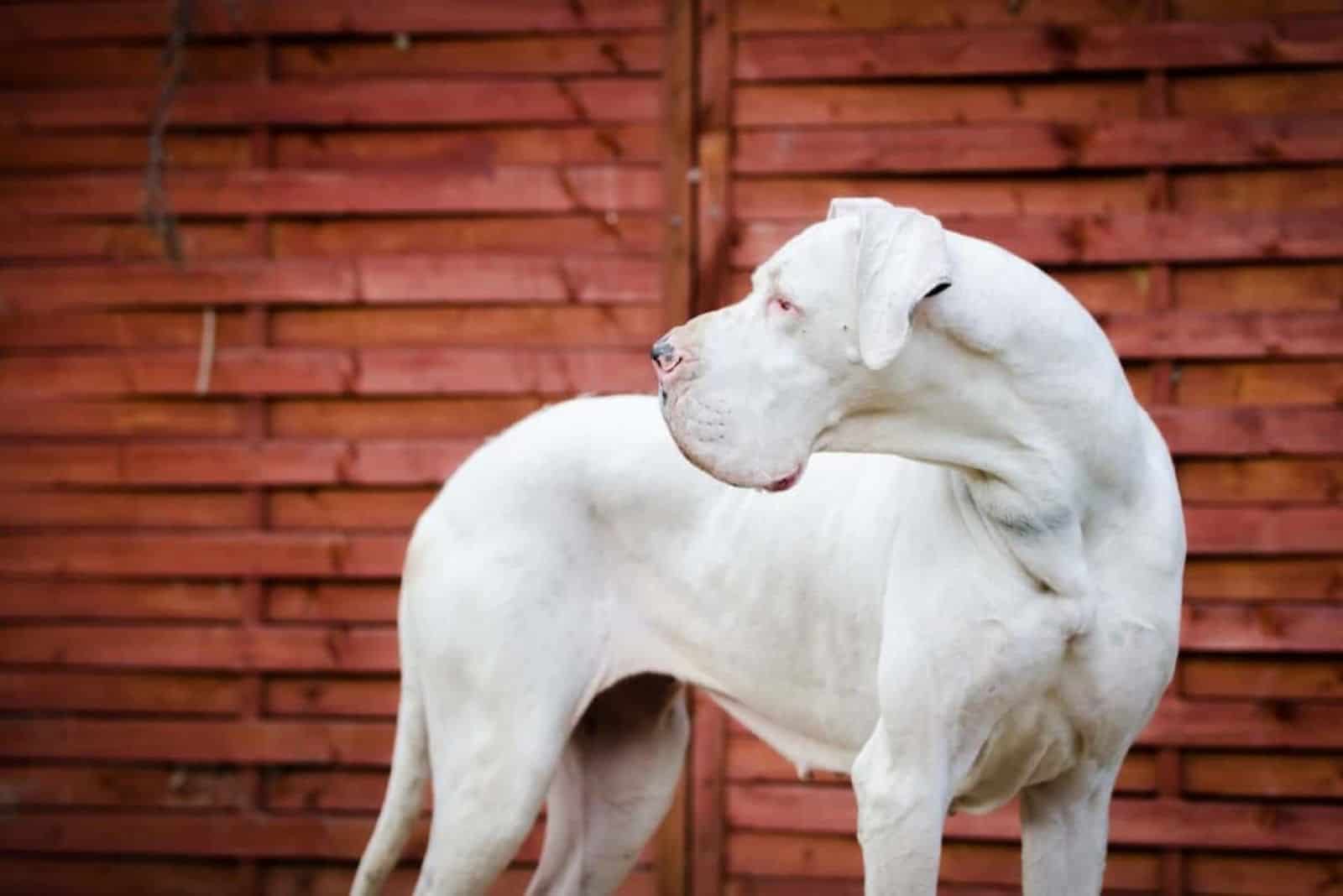
Without a doubt, the answer is white. This isn’t a question of whether people like the color or not, but it has everything to do with genetics.
White Great Danes are susceptible to genetic disorders such as deafness, blindness, and several other eye-related health problems.
Not all White Danes will be affected, but the issue is considered serious enough for the Great Dane Club of America to ban the breeding of this color in order to cut down the chances of the defective genes being passed on.
Other than this, you can get all kinds of different and unusual colors and patterns, such as merlequin, piebald, and even fawnequin! It all depends on the genes of the parent dogs.
What Is The Most Popular Color Of A Great Dane?

This is where it gets really interesting as it all depends on how you measure popularity. If you mean what is the most commonly found color, then the answer is definitely fawn. Quite how much influence Scooby-Doo has had on this fact is unknown (yes, Scooby is a Great Dane)!
Although the AKC restricts colors for show dogs, rejecting anything else as a ‘mismark’ or is known as being ‘nonstandard’. These differences are a good thing, and they bring greater variety. This, in itself, is good news for the breed as a whole as it widens the gene pool.
If you’re not planning to raise a show dog, then its coat shouldn’t be too much of a concern. Instead, you might want to learn more about the health, care, temperament, and character of your Great Dane puppy. Speaking of pups, their coloration will change as they mature, making the task of selecting a specific color more difficult.
You could measure popularity by how much the pups of a particular color might cost as breeders will raise prices to match the demand. In this case, blue Great Danes might be considered the most popular. Although it’s not actually blue, obviously, it comes in a striking range of slate gray shades that contrast with its beautiful eye coloring.
Since we have raised the issue here, we might as well address the question…
How Much Do Great Danes Cost?
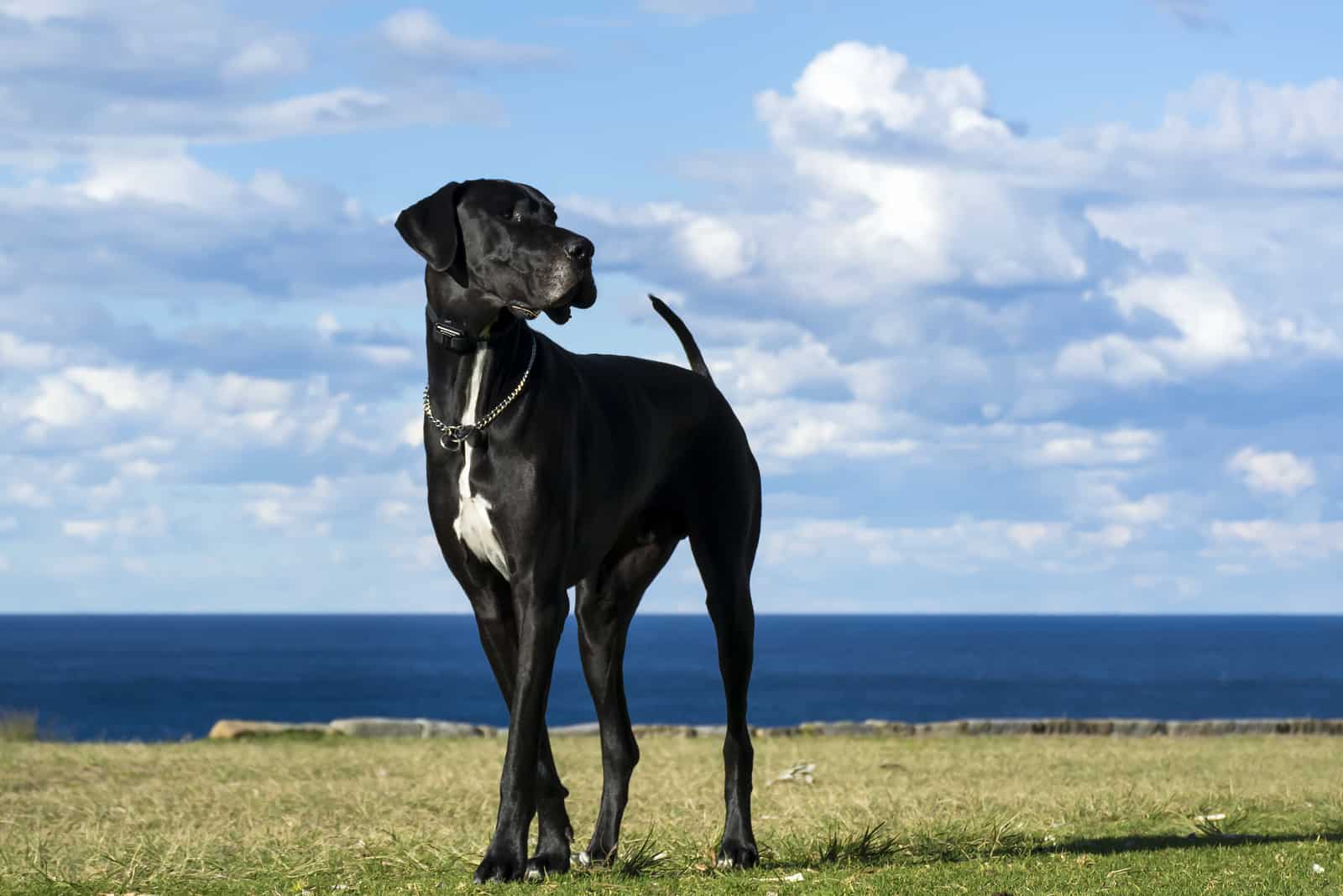
As you might expect, a large dog equals a large price tag! There’s a huge difference in the price of pups, too. Breeders will charge between $600 and $3,000 depending on whether they are a pedigree pup. All this means is that their lineage can be proved and will have official AKC certification.
Some of the cost will also depend on gender and coat color.
If you’re not planning to show your dog, then you won’t need a pedigree animal. In this case, a reputable breeder will charge an average of $1,500 for a healthy animal with a great temperament.
To reduce the cost even further, you could visit a dog shelter and adopt a Great Dane for a fraction of the price. Not only will you save money, but you’ll also have the satisfaction of providing a sad pooch with a loving home.
Bear in mind, though, that the cost doesn’t end there. In fact, it is just beginning!
You will need to consider how much you will be spending on things like training, beds, microchipping, treats, toys, leashes, grooming, food, insurance, and vet bills. With an average lifespan of between eight and 10 years, you could be looking at an investment of around $35,000 over this time. However, you should keep in mind that some of these dogs will only live between six and eight years.
Are Mantle Great Danes Rare?

As colors go, mantles are fairly common, but they are not seen as frequently as others, such as solid black, fawn, or blue. Even so, because of the variations in the patterning, it is quite rare to find two that look exactly alike.
Mantles are often bred for show, but, as mentioned above, they need to fit the exacting breed standards of the AKC and other organizations worldwide.
If you are purely after a family pet, then the fact that your dog is a mismark or a non-standard won’t matter one bit!
The History Of The Great Dane
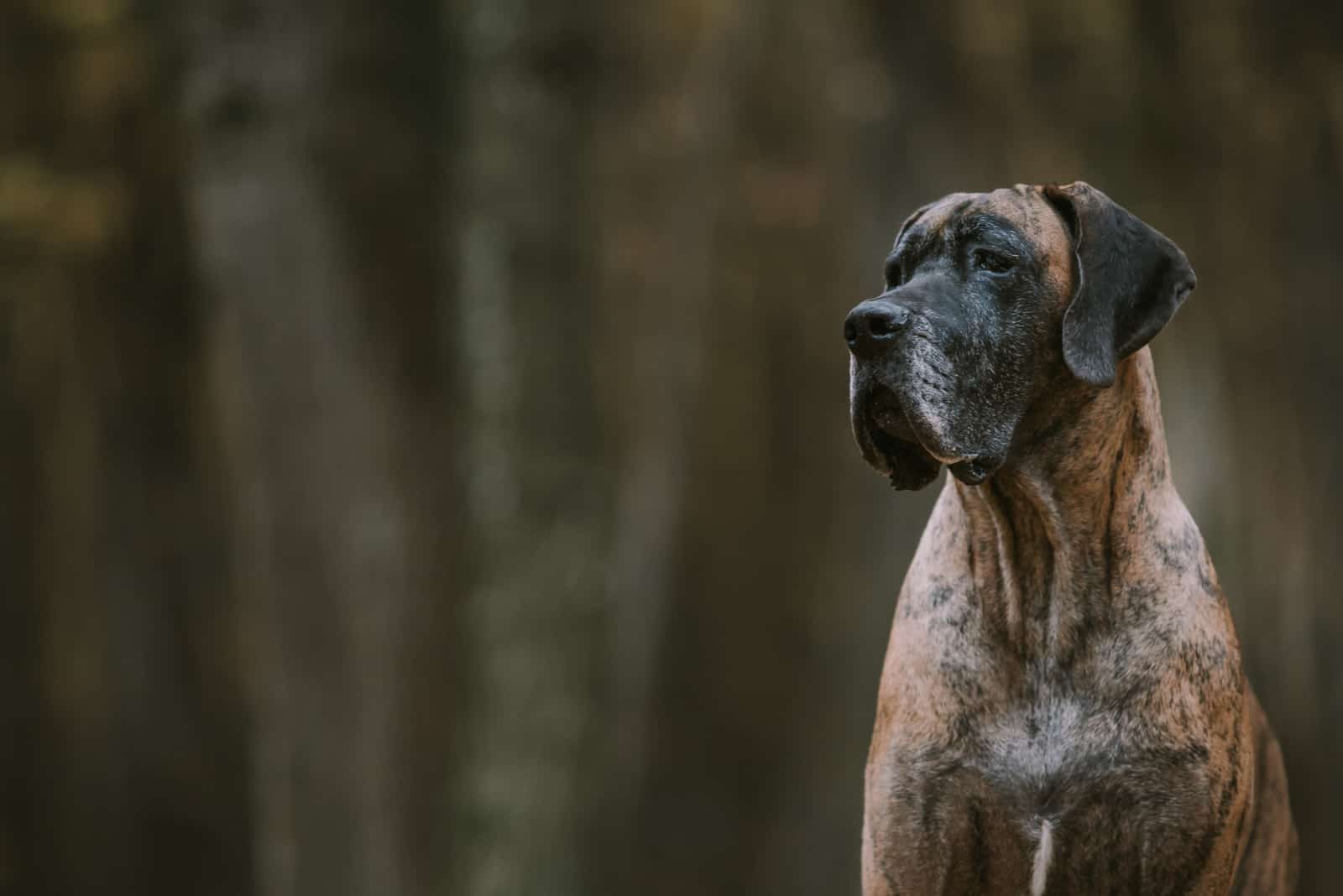
Going by the name, you’d expect them to have originally been bred in Denmark, right?
Wrong!
This breed is from Germany, and it is known there as the Deutsche Dog (German Dog). It was bred for hunting boar and protecting the country estates of German nobles. As a breed, they have been around for about 400 years, and although they are no longer used as hunting dogs, they still retain their instinct for guarding the home.
It is believed that they were a crossbreed of Irish Wolfhounds and English Mastiffs, and was originally known as the English Dog before the name was changed in 1878. This changed yet again due to political tensions as relationships between Germany and other countries became strained, and the breed was identified as the Great Dane.
As hunting large game fell out of favor, breeders started to produce less aggressive dogs that were suitable as pets. They were gradually introduced to America in the 1800s, and were officially recognized as a breed by the AKC in 1887.
From that point, they have grown in popularity and have earned a place in the hearts of dog owners worldwide. Over time, many Great Dane mixes were bred, such as its crossbreeds with Corgi, Poodle, Cane Corso, Husky, and even Chihuahua!
Grooming, Care, And Exercise

As big as these dogs are, their coats don’t take too much work. They have a single coat that is classed as a ‘low shedder’, which means you can get away with brushing them once a week with a grooming mitt or a medium bristle brush.
This shedding will increase twice a year and will be fairly heavy, usually around spring or fall, and you’d be wise to brush them each day in order to avoid having hair all over your house.
Only bathe them occasionally or when necessary. As you can imagine, this will be quite a task because of their size! You might want to consider using the services of a professional groomer to help you out with this.
Be sure to trim those nails or they will become too long and cause painful problems with walking.
Are They Healthy?
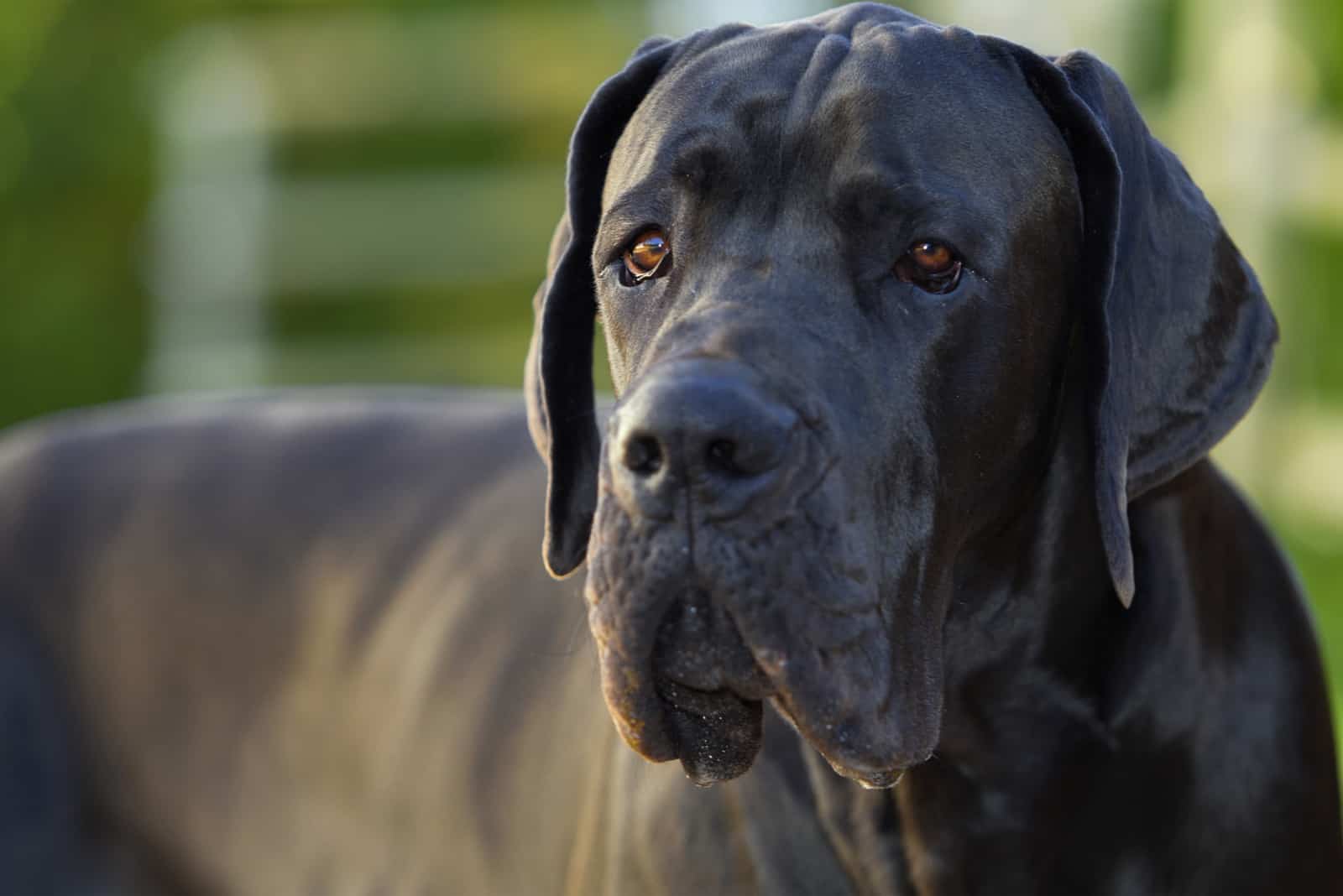
Like all pure breeds, they are more prone to certain conditions and diseases. The best way to limit the chances of these occurring is to use an ethical, respected breeder who offers genetic testing and screening, and a health guarantee that covers the first couple of years.
You have a responsibility to ensure that they are fed a good diet, and that any problems are checked out with the vet immediately.
These are the more common health problems to watch out for:
• Canine bloat – a build-up of gas in the stomach that causes it to twist, cutting off the blood supply to internal organs.
• Enlarged heart – the heart is too big for the body and doesn’t function properly.
• Bone Cancer – often affecting the legs.
• Hip dysplasia – the ball and socket joints are not formed properly, causing the bones to grate.
• Eye problems – including glaucoma and cherry eye.
Is The Mantle Great Dane The Dog For You?
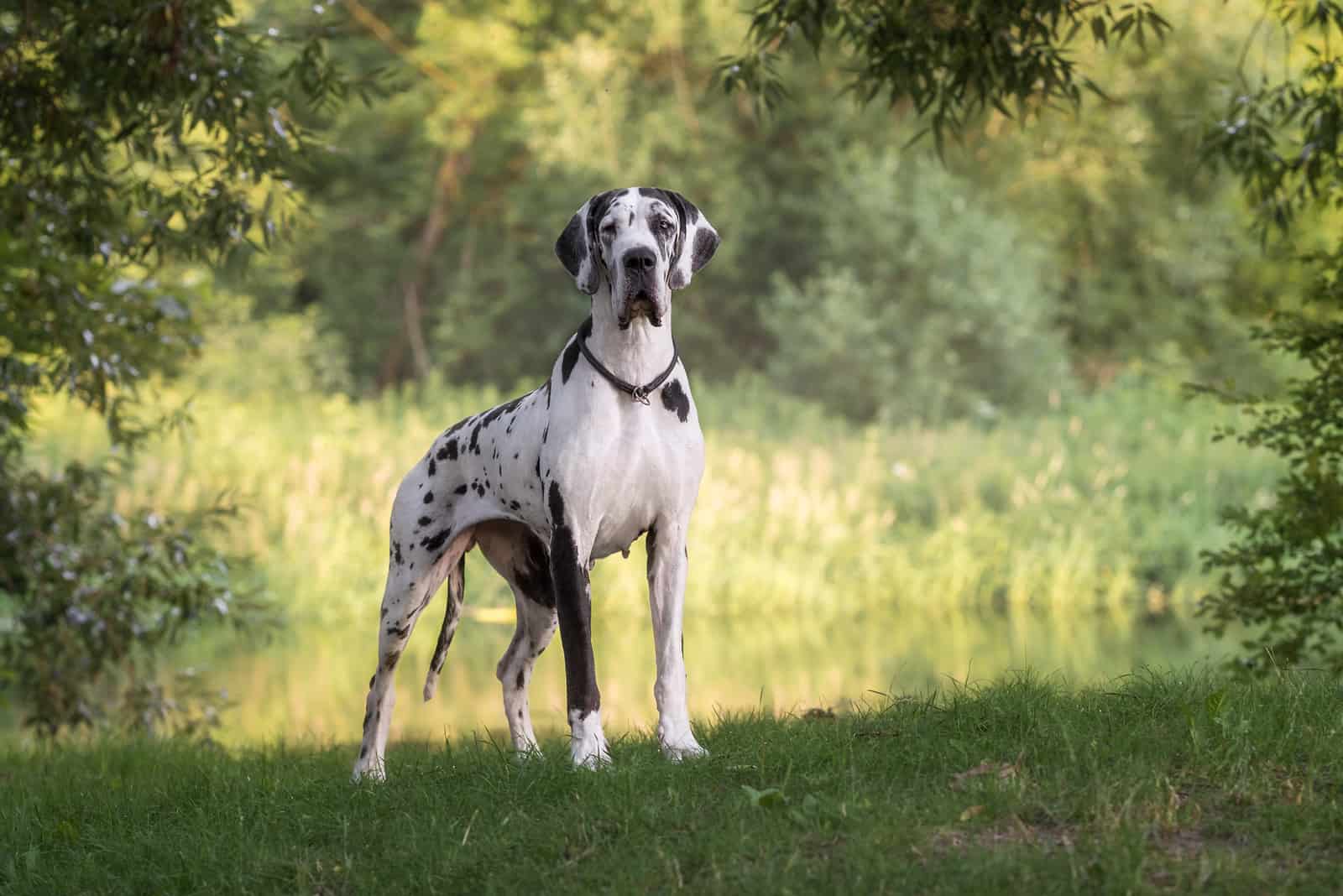
The Great Dane dog is a goofy, affectionate giant despite its size. It is brilliant with kids, though it can be a bit clumsy around smaller children and could knock them down in its enthusiasm.
It has a reputation of being a couch potato, so you’ll need a big sofa! It loves nothing better than snuggling up with you as you relax at home. You won’t need to invest a lot of time in exercise (a couple of brisk walks a day), although it will happily join you on your morning jog or a hike when it’s over two years old. If you do this any earlier, you will risk damaging their joints.
Bravery, loyalty, and fierce protectiveness are natural traits, and your Great Dane will make an excellent watchdog.
It’s always a good idea to train your pup while they’re still young just to iron out any potential behavior problems later. Individual dogs can be a little slow to learn, although, in general, they are considered fairly easy to train.
Overall, they’re a soft, sweet breed that just wants to be your best friend!
